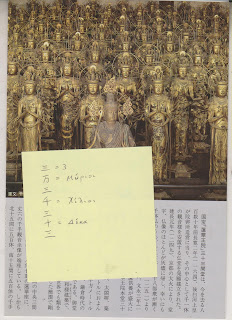ΑΠΧ. #44
1ο. Χανιώτικα Νέα 7039/28-2-1991, σελ. 11
2ο. Χανιώτικα Νέα 7040/1-3-1991, σελ. 11
3ο. Χανιώτικα Νέα 7040 (=7041)/2-3-1991, σελ. 11
ΨΗΦ. ΕΠΙΤΥΜΒΙΑ
ΣΥΜΠΛΗΡΩΜΑΤΙΚΑ
1. Αρχιμήδης
 THE TOMB OF ARCHIMEDES. SOURCES
THE TOMB OF ARCHIMEDES. SOURCES
2. Διόφαντος
Epitaph of Diophantus
Ludolph van Ceulen (1540–1610). The last great Archimedean calculation, performed by van Ceulen using 2^62-gons — to 39 places with 35 correct — was published posthumously. The number is still called Ludolph’s number in parts of Europe and was inscribed on his head-stone. This head-stone disappeared centuries ago but was rebuilt, in part from surviving descriptions, recently as shown in Figure 7. It was reconsecrated on July 5th 2000 with Dutch royalty in attendance. Ludolph van Ceulen, a very serious mathematician, was also the discoverer of the cosine formula.
Jonathan M. Borwein, The Life of Pi: From Archimedes to Eniac and Beyond, p. 6.
ΨΗΦ. Ludolph van Ceulen
4. Carl Friedrich Gauss
According to the German mathematician Heinrich Weber (1842–1913) famous for the KroneckerWeber theorem, Gauss requested that the 17-gon be engraved on his tombstone (footnote in § 97 of the first edition of [Web1903] :
Translation: 1) Disq. arithmeticae, Chapter VII. As is recorded that Archimedes ascertained that his epitaph show a ball with a cylinder, Gauss expressed his wish that his epitaph immortalizes the figure of the 17-gon. This little tale shows the importance Gauss himself put on his discovery. On the epitaph this wish was not fulfilled, yet on the monument erected for Gauss in his native town Braunschweig, the statue is placed on a (barely visible for the visitor) 17-gon.
Laura Anderson, Jasbir S. Chahal and Jaap Top, The last chapter of the Disquisitiones of Gauss
He also asked that a 17-gon be inscribed on his tombstone. His wish was not honored but a 17-pointed star was inscribed on a memorial erected in his honor in his home town of Brunswick. In the photo below you can (barely) see the star under Gauss’s right foot. Here is a closeup.
Braunschweig Gauss-Denkmal 17-eckiger Stern
5. Jacob Bernoulli
Bernoulli was so enamored with the logarithmic spiral that he wanted it engraved on his headstone. However, the engraver accidentally carved an Archimedean spiral.
What do you want on your tombstone?
6. Ferdinand von Lindemann
In 1882 Lindemann proved that pi is a transcendental number. This put to rest the 2000+ year old question of whether it is possible to “square the circle“—i.e., construct, using only a compass and straightedge, a square having the same area as a given circle. (He proved that it was impossible.) His grave has a circle superimposed on a square, surrounding the symbol pi.
What do you want on your tombstone?
7. Henry Perigal
Henry Perigal was an amateur mathematician whose life spanned almost the entire nineteenth century and who is now known principally for an elegant cut-and-shift proof - what is now called a dissection proof - of Pythagoras' Theorem. He himself perhaps felt that this was his most important accomplishment - his diagram was carved, presumably at his own request, on his gravestone
Bill Casselman, On the dissecting table. Henry Perigal 1801 - 1898
8. Roger Apéry
100 years ago (on 14th November) was born a Frenchman called Roger Apéry. He died in 1994, is buried in Paris, and upon his tombstone is the cryptic inscription:
1+1/8+1/27+1/64+.... =/= p/q
Apéryodical: Roger Apéry’s Mathematical Story
Find a Grave










Comments
Post a Comment